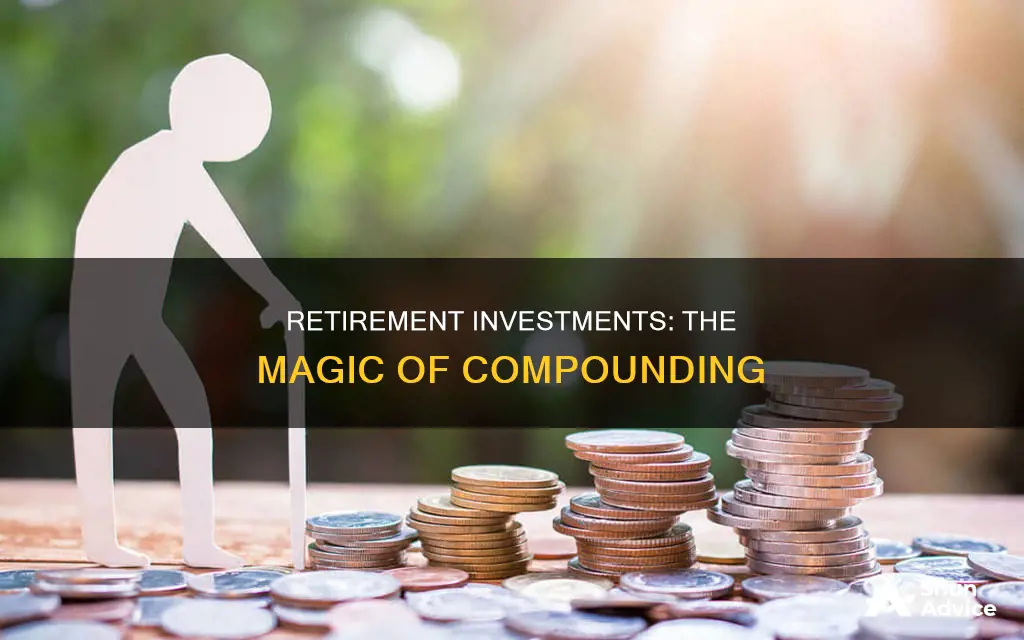
The Rule of 72 is a widely used method to estimate how long it will take for an investment to double based on its fixed annual rate of return. By dividing 72 by the fixed rate of return, investors can get a rough estimate of how long it will take for their portfolio to double in size. For example, if an investment has an average annual return of 10%, it will take approximately 7.2 years to double. It's important to note that this rule assumes no additional contributions and a consistent annual rate of return, and it doesn't account for investment fees, inflation, or taxes. While the Rule of 72 provides a quick estimate, it's not always accurate, especially for volatile investments or those with low rates of return.
| Characteristics | Values |
|---|---|
| Rule of 72 | A rule of thumb that investors can use to estimate how long it will take for their investment to double |
| Rule of 72 calculation | Divide 72 by the fixed rate of return |
| Rule of 72 accuracy | Most accurate for rates of return between 6% and 10% |
| Rule of 72 alternatives | Rule of 70, logarithmic formula |
| Rule of 72 limitations | Does not account for investment fees, losses, taxes, inflation, or volatile investment returns |
What You'll Learn

The Rule of 72: a shortcut to estimate how long it takes to double your money
The Rule of 72 is a simple calculation that can be used to estimate how long it will take for your money to double at a given rate of return. It is a useful rule of thumb for investors, particularly those new to investing, as it is easy to calculate and provides a quick, approximate answer.
The formula is: 72 / expected rate of return = number of years to double.
For example, if your investment earns an average of 6% per year, you would take 72 divided by 6, giving you 12 years for your money to double.
The Rule of 72 can also be used to calculate what rate of return you need to double your money within a certain time frame. For example, if you want to double your money in 5 years, divide 72 by 5, which means you will need to earn 14.4% interest annually: 14.4 x 5 = 72.
The Rule of 72 is a simplified version of a more complex compound interest calculation. It is most accurate for rates of return between 6% and 10%. For rates outside this range, the formula can be adjusted by adding or subtracting 1 from 72 for every 3 percentage points the interest rate diverges from 8%. For example, for a 5% rate of return, you would use 72 - 1 = 71, and for a 14% rate of return, you would use 72 + 1 = 73.
The Rule of 72 can also be used to estimate how long it will take for your money to halve due to inflation. For example, if inflation is at 4%, your money will halve in around 18 years (72 / 4 = 18).
While the Rule of 72 is a useful shortcut, it is important to note that it is not entirely precise. For more accurate calculations, investors can use online compound interest calculators or the Rule of 69.3, which is a more accurate version of the Rule of 72.
Markets in Turmoil: Investments Down Across the Board
You may want to see also

The Rule of 72 doesn't account for investment fees
The Rule of 72 is a simple formula used to estimate how long an investment will take to double, given a fixed annual rate of interest. It is calculated by dividing 72 by the annual rate of return. For example, if an investment scheme promises an 8% annual compounded rate of return, it will take approximately nine years (72 / 8 = 9) to double the invested money.
While the Rule of 72 is a useful tool for quick mental calculations, it does not account for investment fees, taxes, or other expenses that can impact returns. Investment fees, such as management fees and trading commissions, can significantly reduce the returns on an investment. These fees are not factored into the Rule of 72 calculation, which assumes a constant rate of return.
For example, let's consider an investment with an expected annual return of 10%, which would take approximately 7.2 years to double according to the Rule of 72 (72 / 10 = 7.2). However, if there are investment fees of 2%, the actual annual return would be 8%, and it would take approximately 9 years to double the investment (72 / 8 = 9). This is a significant difference, especially when planning for long-term financial goals like retirement.
Additionally, the Rule of 72 assumes a fixed rate of return, which is not always realistic, especially for stocks or other volatile investments. The average return may not be indicative of the actual return in any given year, and short-term volatility can impact the annual return rate. Therefore, while the Rule of 72 is a good starting point, it should be used with caution and in conjunction with other tools and professional advice when making investment decisions.
For a more precise estimate, investors can use a logarithmic formula that accounts for compound interest. This formula is more complex but provides a more accurate representation of how fees, returns, and time interact to impact an investment's growth over time.
In conclusion, while the Rule of 72 is a valuable tool for quick estimates, it is important to remember that it does not account for investment fees, taxes, or other expenses. These factors can significantly impact the actual returns on an investment, and more comprehensive analysis is necessary when making financial plans, especially for retirement.
Stock Market: Why Don't More People Invest?
You may want to see also

The Rule of 72 is not always accurate
The Rule of 72 is a simplified formula that calculates how long it will take for an investment to double in value based on its rate of return. It is a quick and useful formula that is popularly used to estimate the number of years required to double the invested money at a given annual rate of return.
However, it is important to note that the Rule of 72 is not always accurate. While it provides a reasonably accurate estimate for interest rates that fall in the range of 6% to 10%, its accuracy decreases for rates outside this range. The rule is based on exponential growth and is used for compound interest calculations, not simple interest. It assumes a fixed annual rate of return and does not account for additional contributions or withdrawals.
The Rule of 72 is a good starting point for mental calculations and quick estimates, but it is not sufficient for precise financial planning. For more accurate results, investors can use a logarithmic formula or seek advice from a professional financial advisor. Additionally, other rules, such as the Rule of 69, Rule of 70, or Rule of 73, may be more suitable depending on the specific situation and interest rates involved.
The Rule of 72 also does not consider the impact of investment fees, management fees, trading commissions, and taxes on investment gains. These fees and charges can significantly affect the overall returns and should be factored into long-term financial planning.
Furthermore, the Rule of 72 assumes a constant rate of return over the investment period. In reality, investment returns can fluctuate, and past performance does not guarantee future results. It is crucial to research expected rates of return and be conservative with estimates to make more informed decisions.
While the Rule of 72 can be a helpful guideline, it should be used with caution and in conjunction with other tools and professional advice to make well-informed investment choices.
Dogecoin: Worthy Investment or Just a Meme?
You may want to see also

The Rule of 72 is best for rates of return between 6% and 10%
The Rule of 72 is a quick and easy method for determining how long it will take for an investment to double in value, based on its rate of return. It is a simplified formula that applies to compounded interest rates and is most accurate for rates of return between 6% and 10%.
The Rule of 72 is calculated by dividing 72 by the expected annual rate of return on an investment. For example, if an investment scheme promises an 8% annual compounded rate of return, it will take approximately nine years (72/8 = 9) for the initial investment to double.
The Rule of 72 is a useful tool for investors as it provides a quick and simple way to estimate the growth of an investment over time. It is particularly relevant for retirement planning, allowing investors to make informed decisions about their financial goals.
While the Rule of 72 is a good guideline, it is important to note that it is not entirely precise. It assumes a fixed rate of return, which may not always be the case, especially with volatile investments such as stocks. Additionally, it does not account for investment fees, management fees, or trading commissions, which can impact overall returns.
For more precise calculations, investors can use a logarithmic formula or consider alternative rules, such as the Rule of 69.3 or the Rule of 70, which may provide more accurate estimates, especially for rates of return outside the 6% to 10% range.
In conclusion, the Rule of 72 is a valuable tool for investors, especially when estimating rates of return between 6% and 10%. It provides a quick and simple way to approximate the growth of an investment, making it easier for investors to plan their financial strategies, including retirement planning.
Dividend-Paying ETFs: Smart Investment or Missed Opportunity?
You may want to see also

The Rule of 72 doesn't account for inflation
The Rule of 72 is a simplified formula that calculates how long it will take for an investment to double in value, based on its rate of return. It is a quick and easy way to assess your investments. However, it does not account for the effects of inflation on your investment returns.
The Rule of 72 can be a useful tool for investors to estimate how long it will take for their portfolio to double in size. It is based on a fixed annual rate of return and does not account for additional contributions. While it provides a reasonably accurate estimate, it assumes a constant rate of return, which may not be realistic for stock returns.
For example, if an investment scheme promises an 8% annual compounded rate of return, it will take approximately nine years (72/8 = 9) to double the invested money. However, this calculation does not take into account the impact of inflation on the purchasing power of that money.
Inflation erodes the value of money over time, and the Rule of 72 does not account for this loss in purchasing power. For instance, if the inflation rate is 3%, your money's buying power will be cut in half in approximately 24 years (72/3 = 24). This means that while your investment may double in value, it will not have the same purchasing power as it would have without inflation.
Additionally, the Rule of 72 does not consider other factors that can impact your investment returns, such as taxes, fees, and other expenses. These factors can chip away at your returns over time, further reducing the purchasing power of your investment.
Therefore, while the Rule of 72 can be a helpful starting point for investors, it is important to recognize its limitations and consider the effects of inflation and other factors when making investment decisions and planning for retirement.
Wealthy Secrets: Investment Trends
You may want to see also
Frequently asked questions
The Rule of 72 is a formula used to estimate how long it will take for an investment to double based on its fixed annual rate of return.
To use the Rule of 72, divide 72 by the fixed annual rate of return. The result is the number of years it will take for your investment to double. For example, if the fixed annual rate of return is 10%, it will take 7.2 years to double your investment.
The Rule of 72 is most accurate for rates of return between 6% and 10%. It may not be as accurate for investments with low rates of return or volatile investment returns. It also does not account for investment fees, inflation, or tax rates.
There are other rules of thumb, such as the Rule of 70, which can be used to estimate how long it will take for an investment to double. For a more precise outcome, you can use the logarithmic formula or an online compound interest calculator.
While the Rule of 72 can be a helpful starting point for beginners, it is recommended to consult a professional financial advisor to help you achieve your investment goals. They can assess your financial situation, evaluate the stock market, and recommend specific investments based on your risk tolerance.







